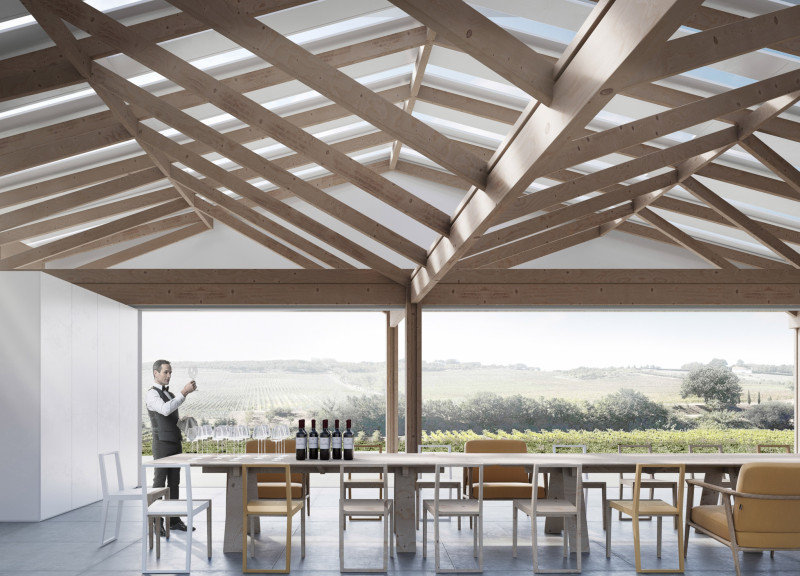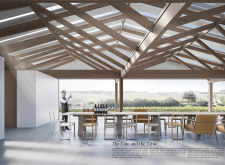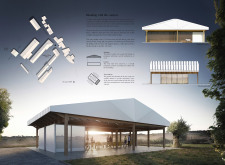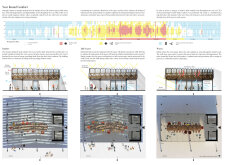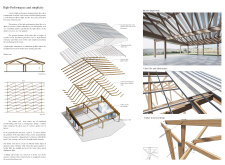5 key facts about this project
The Vine and the Table is an architectural project located in the scenic region of Lisbon, Portugal, serving as a wine tasting room. The design aims to create a harmonious experience that merges indoor and outdoor environments, allowing guests to engage with the surrounding vineyards. The structure reflects a balance between modern architectural practices and traditional elements, presenting a contextual response to its geographic location.
The primary function of the project is to facilitate wine tasting and related communal activities. The spatial organization is designed to encourage interaction among visitors, featuring a central communal table that acts as a focal point of the tasting experience. The layout includes both private and adaptable spaces, allowing for various configurations depending on the event size. This flexibility ensures the venue can host different gatherings, from intimate tastings to larger events.
The design employs timber as the main structural material, which creates a warm and inviting atmosphere. The use of insulated glass tiles enhances natural light availability while providing thermal efficiency. The polished concrete flooring offers durability and aesthetic contrast to the wooden elements.
The pitched roof structure, reminiscent of traditional Portuguese barns, stands out as a significant feature of the design. This roof not only contributes to the visual identity of the building but also plays a critical role in temperature regulation and water management. Ventilation is carefully considered through operable glass walls that promote natural airflow and cooling, particularly during warmer months.
The Vine and the Table distinguishes itself through its sustainable approach and thoughtful integration with the vineyard landscape. Passive energy strategies, such as natural ventilation and solar orientation, are systematically applied to enhance the building's performance while minimizing its ecological footprint. The choices in materiality and design convey a respect for local craftsmanship and cultural identity.
The project emphasizes community engagement, encouraging an appreciation for local wine culture. By inviting visitors to explore the vineyard setting, it fosters a deeper connection to the regional landscape and heritage.
For those interested in understanding the details and intricacies of The Vine and the Table, reviewing the architectural plans, sections, and design ideas will provide valuable insights into the project’s execution and intention. Exploring these elements will further illuminate the unique architectural strategies employed in this design.


